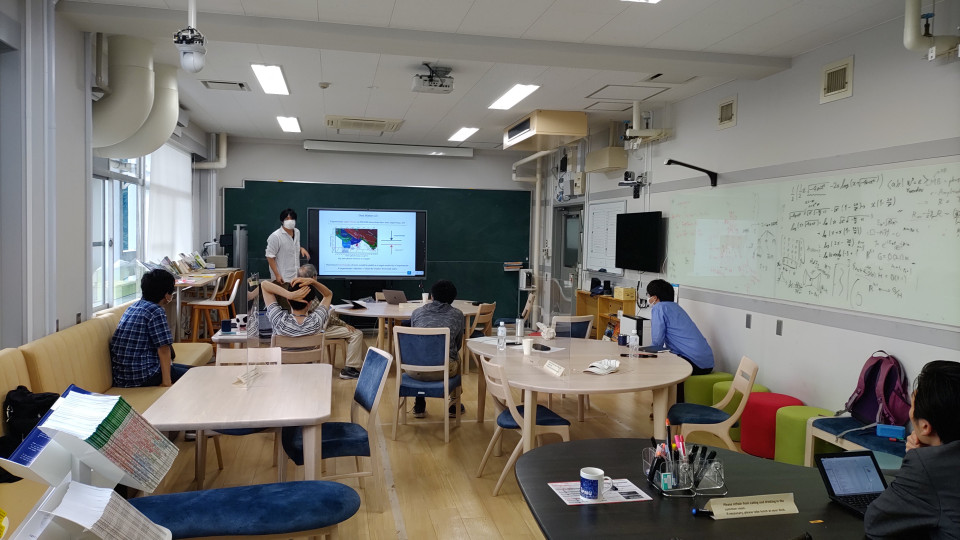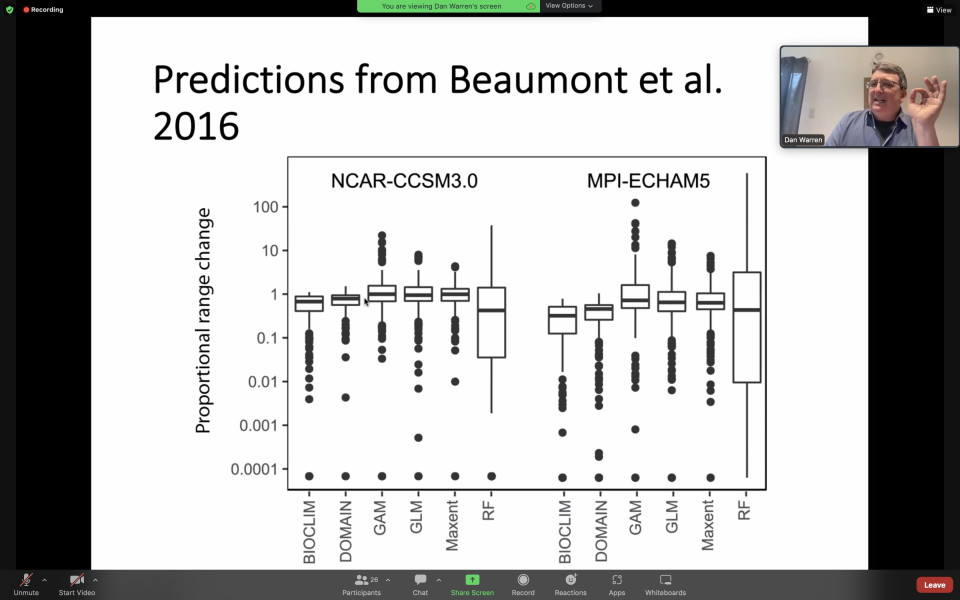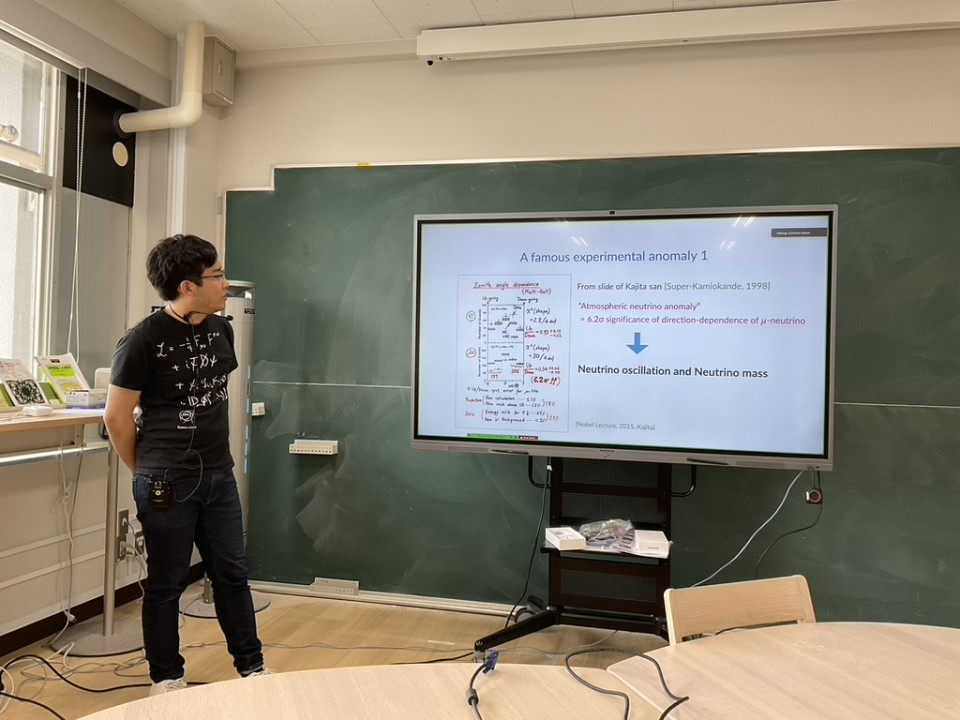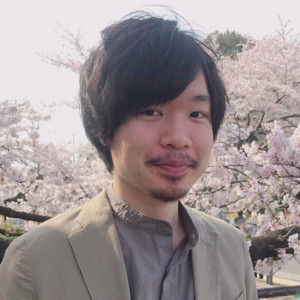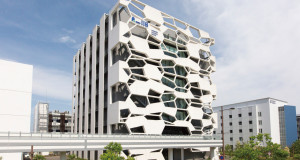Volume 201
Back to Newsletter List
Seminar Report
Math-Phys Seminar by Dr. Toshifumi Noumi on May 19, 2022
2022-05-30
Dr. Toshifumi Noumi (Kobe University) gave a pedagogical seminar on the so-called swampland program in particle physics. The program aims to clarify nontrivial consistency conditions on symmetries in quantum gravity that leave implications for particle physics and cosmology. Dr. Noumi started out with the basic philosophy of the study and expanded the details using the arguments of symmetries, blackholes, holography etc., keeping accessibility for broad audience.
Reported by Ryo Namba
Recent Progress in the Swampland Program
May 19 (Thu) 14:00 - 15:30, 2022
Seminar Report
iTHEMS Math Seminar by Dr. Yuto Moriwaki on May 23, 2022
2022-05-30
On May 23, there was a math seminar by Yuto Moriwaki. He gave an introductory talk on the mathematical formulation of CFT.
Reported by Keita Mikami
A mathematical formulation of two-dimensional conformal field theory
May 23 (Mon) 14:00 - 16:30, 2022
Seminar Report
iTHEMS Biology Seminar by Dr. Dan Warren on May 19, 2022
2022-05-30
In the Biology Seminar on May 19th, 2022, we had the great opportunity to have Dr. Dan Warren (Okinawa Institute of Science and Technology, Japan) as an invited speaker. In his talk, Dr. Warren explained why the evaluation of species distribution models (SDMs) has become a useful method to understand and predict the geographic distribution of species. In particular, they provide vital information to take measurements in the conservation of biodiversity. To construct SDMs, researchers in this field have taken advantage of publicity available geographic and environmental big data. Usually, those kind of data were not produced with the intention to use it in ecology, but ecologists have developed many methods to use the big data to answer questions in ecology and evolutionary biology. However, despite that several of those methods have become standard in ecology, Dr. Warren warns us that all commonly used methods have serious biases, and such biases might be related to how much we unquestionably rely that big data. To explain his point, he showed the results of one paper that he and his colleagues recently published. In that paper, the authors used occurrence data of a fictional animal: the Pokémon Kangaskhan (name in English) or ガルーラ (in Japanese), and followed the usual methods to construct SDMs in order to predict the Pokémon distribution in the Australian territory. They found that the distribution of the fictional animal has strong biases, and that same patterns of biases are also present in many other real-life species. Dr. Warren concluded that there is a big open field to improve methods to construct SDMs. The incorporation of prior information in the construction of SDMs, and the application of Markov chain Monte Carlo methods to account for the uncertainty of results might be effective solutions to solve the problems that persist in this research field.
Reported by José Said Gutiérrez-Ortega
Reference
- Dan L. Warren, Alex Dornburg, Katerina Zapfe, Teresa L. Iglesias, The effects of climate change on Australia’s only endemic Pokémon: Measuring bias in species distribution models, Methods in Ecology and Evolution 12(6):985-995 (2021), doi: 10.1111/2041-210X.13591
More Data, More Problems: Big Data in Correlative Ecology
May 19 (Thu) 16:00 - 17:00, 2022
Seminar Report
Seminar by Dr. Teppei Kitahara on May 20, 2022
2022-05-30
Dr. Teppei Kitahara from Nagoya University gave a comprehensive review of anomalies from the Standard Model in particle physics.
Continuous development of experiments in recent years has revealed a large number of experimental anomalies which the Standard Model cannot explain. It is statistically obvious that as the number of experiments increases, one encounters a new anomaly due to the statistical fluctuation. But interestingly, some of the anomalies have been cross-checked by different experiments. These would be hints for physics beyond the Standard model.
In his seminar, he focused on the flavor anomalies (also known as lepton flavor universality violation), the muon g-2 anomaly, and recently measured the W boson mass anomaly. He also discussed these implications for the new physics and introduced several of his works.
Reported by Etsuko Itou
Deviations from the Standard Model Predictions and New Physics Interpretations
May 20 (Fri) 13:30 - 15:00, 2022
Upcoming Events
Seminar
ABBL-iTHEMS Joint Astro Seminar
Core-collapse Supernova Models with Heavy Axion-like Particles
June 3 (Fri) 14:00 - 15:00, 2022
Kanji Mori (Research Institute of Stellar Explosive Phenomena (REISEP), Fukuoka University)
Axion-like particles (ALPs) are a class of hypothetical bosons which feebly interact with ordinary matter. The hot plasma of stars and core-collapse supernovae is a possible laboratory to explore physics beyond the standard model including ALPs. Once produced in a supernova, some of the ALPs can be absorbed by the supernova matter and affect energy transfer. We recently calculated the ALP emission in core-collapse supernovae and the backreaction on supernova dynamics consistently. It is found that the stalled bounce shock can be revived if the coupling between ALPs and photons is as high as $g_{a\gamma}\sim 10^{-9}$ GeV$^{-1}$ and the ALP mass is 40-400 MeV.
Venue: via Zoom
Event Official Language: English
Seminar
DMWG Seminar
Cosmological phenomena with sterile neutrino
June 6 (Mon) 16:30 - 18:00, 2022
Shintaro Eijima (Institute for Cosmic Ray Research (ICRR), The University of Tokyo)
Event Official Language: English
Seminar
iTHEMS Math Seminar
Algebraic geometry in mixed characteristic
June 10 (Fri) 14:00 - 16:30, 2022
Shou Yoshikawa (Special Postdoctoral Researcher, RIKEN Interdisciplinary Theoretical and Mathematical Sciences Program (iTHEMS))
In algebraic geometry, we study the geometry of algebraic varieties, which are sets defined by algebraic equations.
There are two types of algebraic varieties, they are varieties over characteristic zero and varieties over positive characteristic.
Algebraic geometry in characteristic zero is similar to analytic geometry, so it is related to many other subjects.
In this talk, I will introduce the notion of algebraic geometry in positive characteristic and relationships between positive characteristic and characteristic zero.
In order to study it, we consider families consisting of varieties over characteristic zero and varieties over positive characteristic, called mixed characteristic.
Venue: Hybrid Format (Common Room 246-248 and Zoom)
Event Official Language: English
Seminar
Quantum Matter Seminar
Introduction to Topological Insulators: The Ten-fold Classification of Topological Insulators and Superconductors Part.2
June 13 (Mon) 14:00 - 15:30, 2022
Ching-Kai Chiu (Senior Research Scientist, RIKEN Interdisciplinary Theoretical and Mathematical Sciences Program (iTHEMS))
References
- Andreas P. Schnyder, Shinsei Ryu, Akira Furusaki, and Andreas W. W. Ludwig, Classification of topological insulators and superconductors in three spatial dimensions, Phys. Rev. B 78, 195125 (2008), doi: 10.1103/PhysRevB.78.195125
- Alexei Kitaev, Periodic table for topological insulators and superconductors, AIP Conference Proceedings 1134, 22 (2009), doi: 10.1063/1.3149495
Venue: via Zoom
Event Official Language: English
Seminar
NEW WG Seminar
Non-Abelian vortices in two-flavor dense QCD
June 15 (Wed) 13:30 - 15:00, 2022
Yuki Fujimoto (Postdoctoral Scholars, Department of Physics, University of Washington, USA)
Recently, the phase of the two-flavor quark matter with the new
pattern of color superconductivity was proposed so that the continuous
crossover from the hadronic to the quark phase is realized [1]; it is
in consonance with the recent observation of neutron stars.
In this talk, I will show the classification of the topological
vortices in this phase. We found that the stable vortices are what we
call the "non-Abelian Alice strings" [2]. They are superfluid
vortices carrying 1/3 quantized circulation and color magnetic fluxes.
I will discuss their properties in comparison to the well-established
CFL vortices in three-flavor symmetric setup, by putting some emphasis
on their peculiarity: the non-Abelian generalization of the Alice
property. I will then discuss in detail the possibility that these
vortices are confined as well as how the vortices in the quark phase
can be connected to those in the hadronic phase [3].
[1] Y. Fujimoto, K. Fukushima, W. Weise, PRD 101, 094009 (2020) [1908.09360].
[2] Y. Fujimoto, M. Nitta, PRD 103, 054002 (2021) [2011.09947]; JHEP 09 (2021) 192 [2103.15185].
[3] Y. Fujimoto, M. Nitta, PRD 103, 114003 (2021) [2102.12928].
Venue: via Zoom
Event Official Language: English
Seminar
Math-Phys Seminar
Implications of singularity theorem for non-singular universe
June 16 (Thu) 13:30 - 15:00, 2022
Daisuke Yoshida (Designated Assistant Professor, Graduate School of Mathematics, Nagoya University)
The singularity theorem by Penrose shows that a spacetime singularity arises in certain universal situations. The existence of a spacetime singularity is thought to represent a breakdown in the validity of theories such as general relativity and the phenomenological models of the universe. Thus, if we could build a correct model that describes the beginning of the universe, the universe predicted by that model should be non-singular. In this talk, we will discuss general properties that a non-singular universe must satisfy in order to avoid the singularity theorem. In particular, we will see that the universe must be, in some sense, smaller than the corresponding closed de Sitter spacetime.
Venue: Hybrid Format (Common Room 246-248 and Zoom)
Event Official Language: English
Seminar
iTHEMS Theoretical Physics Seminar
Dress code for infrared safe S-matrix in QED
June 22 (Wed) 13:30 - 15:00, 2022
Sotaro Sugishita (Designated Assistant Professor, Institute for Advanced Research (IAR), Nagoya University)
We consider the infrared (IR) aspects of the gauge invariant S-matrix in QED. I will review the problem of IR divergences in QED, and introduce the dressed state formalism to obtain IR-safe S-matrix elements. I will show a condition for dressed states to obtain IR-safe S-matrix elements, and explain that this condition can be interpreted as the memory effect and is related to asymptotic symmetry. I also explain that IR divergences are necessary to prohibit the violation of asymptotic symmetry. We also argue that the difference between dressed and undressed states can be observed, even if we are able to observe an inclusive cross-section summing over soft photons.
Venue: Hybrid Format (Common Room 246-248 and Zoom)
Event Official Language: English
Seminar
NEW WG Seminar
Superconducting-like heat current: Effective cancellation of current-dissipation trade-off by quantum coherence
July 25 (Mon) 13:30 - 15:00, 2022
Tajima Hiroyasu (Assistant Professor, Graduate School of Informatics and Engineering, The University of Electro-Communications)
Recent developments in statistical mechanics have revealed a tradeoff between heat current and dissipation [1,2]. In various situations, this current-dissipation tradeoff represents a relationship between thermal energy flow and entropy increase, similar to Joule’s law W=RI^2.
On the other hand, the coherence effect on the current-dissipation tradeoff has not been thoroughly analyzed. Here, we systematically analyze how coherence affects the current-dissipation tradeoff [3]. The results can be summarized in the following three rules:
- Quantum coherence between different energy levels strengthens the trade-off. In other words, the ratio between the square of the heat current and the entropy production ratio corresponding to electrical resistance R (hereafter referred to as "thermal resistance") is increased by the superposition of different energy levels.
- Coherence between degeneracies weakens the trade-off. That is, thermal resistance is weakened by coherence between degeneracies.
- With enough coherence between degeneracies, we can cancel the trade-off effectively and make the thermal resistance approximately zero. Then, macroscopic heat flow without entropy increase is realized.
These three results directly reveal the coherence effects on heat engine performance. That is, coherence between different energy levels reduces the performance, while coherence between degeneracies increases it. And when there is a sufficient amount of coherence between degeneracies, the efficiency can asymptotically reach the Carnot efficiency (η=η_{Car}-O(1/N)) while the power is O(N).
References
- N. Shiraishi, K. Saito, H. Tasaki, Universal Trade-Off Relation between Power and Efficiency for Heat Engines, Phys. Rev. Lett. 117, 190601 (2016), doi: 10.1103/PhysRevLett.117.190601
- A. C. Barato, U. Seifert, Thermodynamic Uncertainty Relation for Biomolecular Processes, Phys. Rev. Lett. 114, 158101 (2015), doi: 10.1103/PhysRevLett.114.158101
- H. Tajima, K. Funo, Superconducting-like Heat Current: Effective Cancellation of Current-Dissipation Trade-Off by Quantum Coherence, Phys. Rev. Lett. 127, 190604 (2021), doi: 10.1103/PhysRevLett.127.190604
Venue: via Zoom
Event Official Language: English
Workshop
DM3 - Deep insights and Multiple strategies for Deciphering the Mystery of Dark Matter
September 15 (Thu) - 17 (Sat) 2022
Venue: SUURI-COOL (Kobe), Room S704-S705, Integrated Innovation Building (IIB), Kobe Campus, RIKEN / via Zoom
Event Official Language: English
Paper of the Week
Week 1, June 2022
2022-06-02
Title: Evaporation of Echoing Black Holes
Author: Naritaka Oshita, Hayato Motohashi, Sousuke Noda
arXiv: http://arxiv.org/abs/2205.15342v1
Title: Viscosity suppresses r-process viable outflows in global models of collapsar disks
Author: Oliver Just, Miguel A. Aloy, Martin Obergaulinger, Shigehiro Nagataki
arXiv: http://arxiv.org/abs/2205.14158v1
Title: On a singular limit of the Kobayashi--Warren--Carter energy
Author: Yoshikazu Giga, Jun Okamoto, Koya Sakakibara, Masaaki Uesaka
arXiv: http://arxiv.org/abs/2205.14314v1
Title: Complementarity and causal propagation of decoherence by measurement in relativistic quantum field theories
Author: Yoshimasa Hidaka, Satoshi Iso, Kengo Shimada
arXiv: http://arxiv.org/abs/2205.08403v2
Title: Angular Momentum Inheritance from the Schwinger Effect in (Chromo)electromagnetic Fields
Author: Patrick Copinger, Yoshimasa Hidaka
arXiv: http://arxiv.org/abs/2203.10917v1
If you would like to cancel your subscription or change your email address,
please let us know via our contact form.
Copyright © iTHEMS, RIKEN. All rights reserved.


